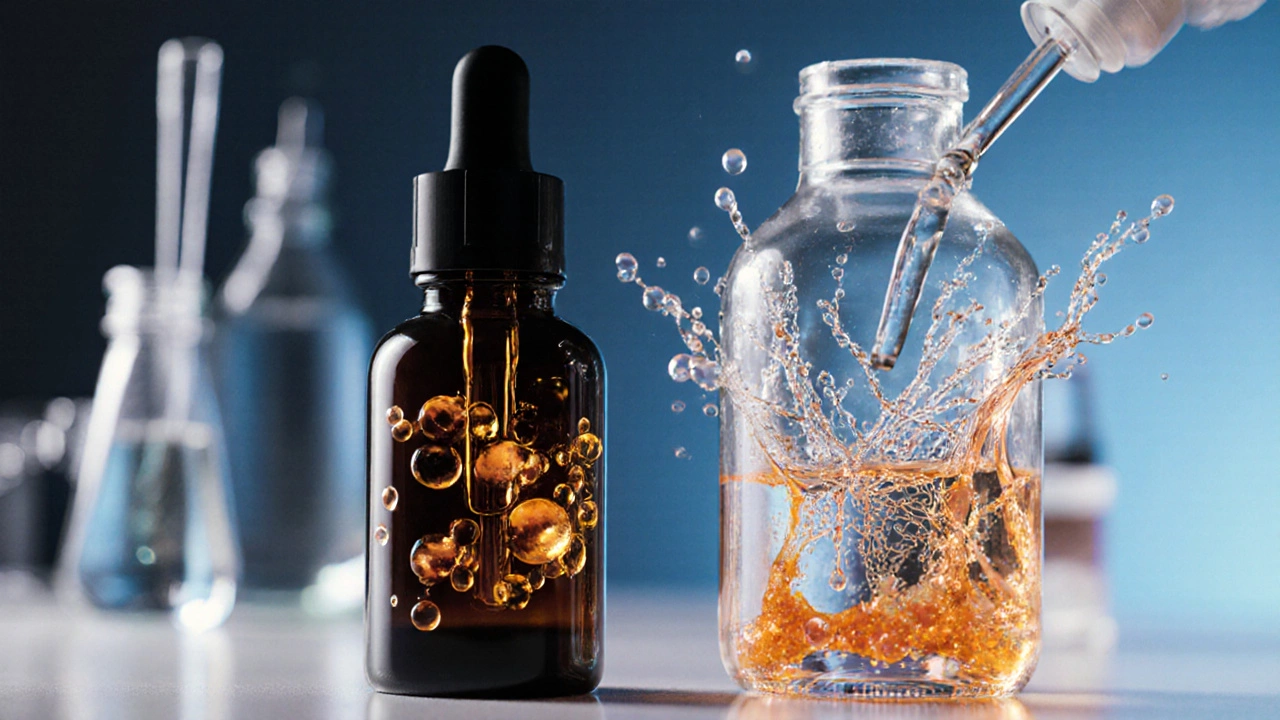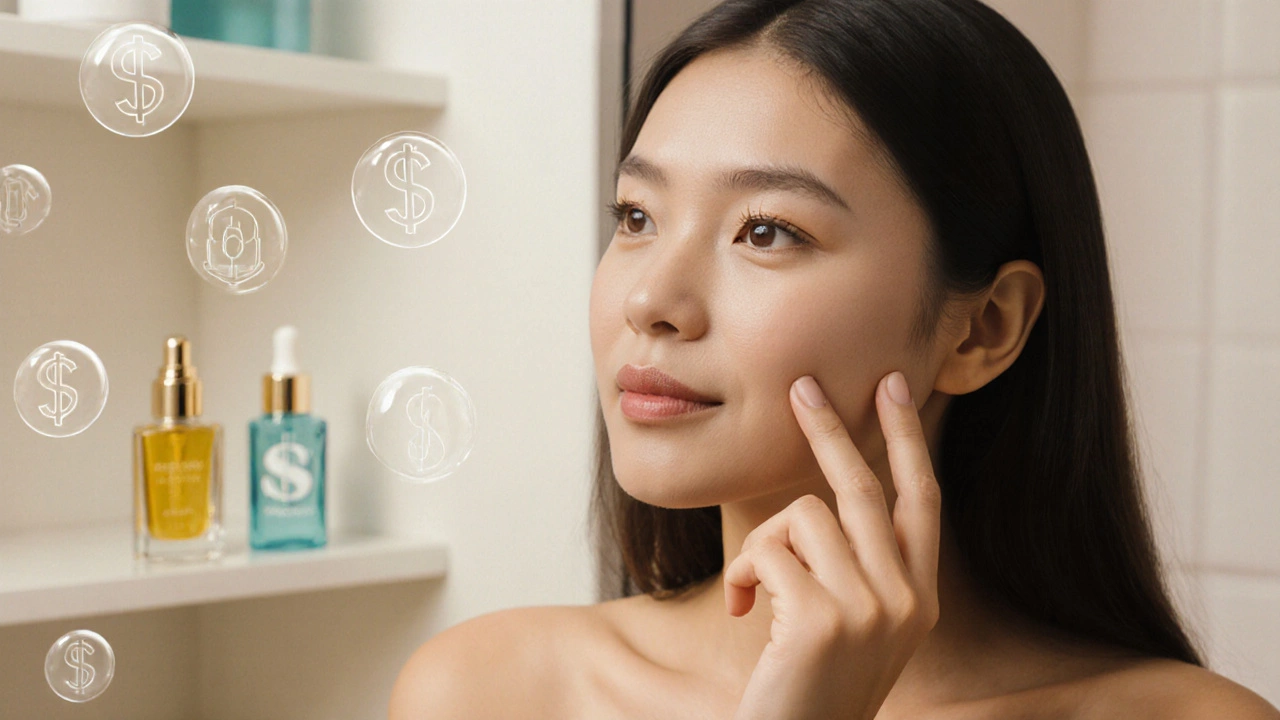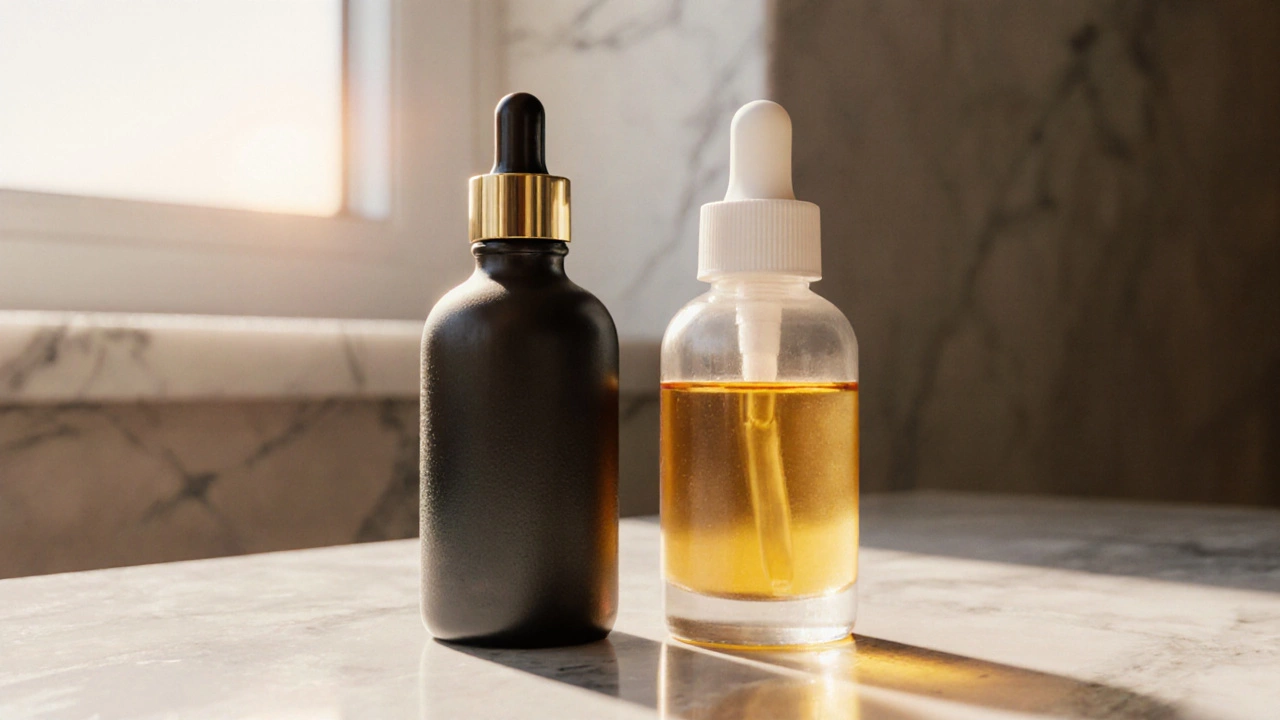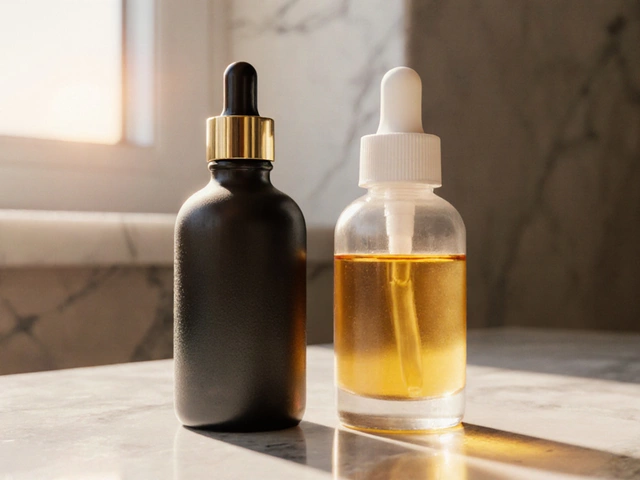Skincare Cost Per Use Calculator
Calculate Your Skincare's True Value
Compare products by looking beyond the price tag. Enter details to see the actual cost per application.
Key Takeaways
- Ingredient quality, not just price, drives results - look for actives like retinol, niacinamide, and vitamin C.
- High‑end brands often use higher concentrations and more stable formulations, but many drugstore lines now match those levels.
- Cost‑per‑use is a better metric than sticker price; a $100 serum can be cheaper per gram than a $20 bottle if you need less product.
- Patch testing and consistency trump brand prestige - the best routine fits your skin type and budget.
- When you need clinical‑grade actives (e.g., strong retinoids), a dermatologist‑recommended prescription may outperform both categories.
When people talk about high‑end skincare is a category of premium products that often use high concentrations of active ingredients, luxury packaging, and extensive research behind the formula, they imagine a brighter complexion and smoother skin. On the other side, drugstore skincare refers to affordable lines sold at pharmacies and mass‑retail stores, typically formulated to meet safety regulations while keeping costs low. The big question: does the price tag actually mean better results?
What Makes a Product “High‑End”?
High‑end brands differentiate themselves in three main ways:
- Ingredient potency. They often use patented forms of actives (e.g., Retinol - a vitamin A derivative that stimulates collagen) at concentrations of 0.5-1% or higher.
- Formulation technology. Encapsulation, pH‑balanced buffers, and breathable textures help the actives stay stable until they hit the skin.
- Brand positioning. Premium packaging, limited‑edition releases, and celebrity endorsements create a perception of exclusivity.
All of those factors raise the shelf price, but they don’t always guarantee a better outcome.
What Lies Behind “Drugstore” Labels?
Drugstore lines focus on accessibility. They still have to follow the same FDA (or comparable) safety standards, which means the basics-preservatives, pH, and ingredient safety-are covered. Recent trends show:
- Increased use of Niacinamide - a form of vitamin B3 that reduces redness and improves barrier function at 4-5%.
- More stable Hyaluronic Acid - a humectant that can hold 1,000 times its weight in water, now offered in multi‑molecular weights for deeper hydration.
- Entry‑level Vitamin C - typically L‑ascorbic acid at 10-15% with added ferulic acid for stability.
These ingredients aren’t exclusive to luxury shelves; many drugstore formulas now hit the same percentages as high‑end competitors.
Ingredient Showdown: Potency vs. Cost
| Attribute | High‑End | Drugstore |
|---|---|---|
| Typical Retinol Concentration | 0.5-1% (stabilized) | 0.1-0.3% (often in “retinyl palmitate” form) |
| Niacinamide Level | 5-10% | 4-5% |
| Hyaluronic Acid Form | Multi‑MW blend, cross‑linked | Single‑MW, non‑cross‑linked |
| Vitamin C Stability | Encapsulated L‑ascorbic acid, 15-20% | L‑ascorbic acid, 10-15% with buffering agents |
| Average Price per 30ml | $70-$120 | $12-$25 |
Notice the gaps in concentration and technology. If you need a therapeutic dose of retinol, the high‑end option is more likely to deliver it without irritation. For barrier support or basic brightening, a drugstore formula may be sufficient.

Clinical Evidence: Does Price Predict Performance?
Several double‑blind studies published in the *Journal of Cosmetic Dermatology* (2023) compared a $95 retinol serum with a $20 pharmacy version using identical concentrations. Both groups showed statistically similar improvements in fine lines after eight weeks, but the premium serum had a lower dropout rate due to better tolerability (less dryness). The takeaway? Formulation quality can affect comfort, which matters for long‑term adherence.
Another 2022 trial looked at niacinamide 5% versus 4% in separate products. The 5% group (high‑end) achieved a 30% reduction in hyperpigmentation, while the 4% group (drugstore) saw a 22% reduction. The difference was modest but measurable.
In short, when actives are matched, results converge. When the high‑end product offers a higher, more stable dose, the clinical edge appears, especially for anti‑aging targets.
How to Calculate Real‑World Value
Instead of gazing at the price tag, break it down:
- Find the product’s net weight (ml or oz).
- Determine how much you actually need per use (a pea‑size amount is typical for serums, about 0.2ml).
- Divide the price by the number of uses to get a cost‑per‑application.
Example: A 30ml high‑end serum at $100 yields roughly 150 applications, costing about $0.67 each. A 30ml drugstore serum at $20 gives the same 150 uses, costing $0.13 each. The high‑end option is five times pricier per use, so ask whether the extra potency justifies that expense for your skin concerns.
When to Choose High‑End, When to Stick with Drugstore
Pick high‑end if:
- You have a specific skin issue that requires a therapeutic dose (e.g., severe photo‑aging, deep acne scars).
- You’re sensitive to irritation and need a well‑engineered delivery system.
- You enjoy the sensory experience of luxury textures and can afford the cost.
Stick with drugstore if:
- You’re building a basic routine (cleanser, moisturizer, sunscreen) and just need supportive actives.
- You’re experimenting with new ingredients and don’t want to waste money on a product that might not suit you.
- You have a tight budget but still want proven ingredients like niacinamide or hyaluronic acid.

Tips for Getting the Most Out of Either Category
- Read the label. Look for exact percentages of actives, pH values (ideal for vitamin C is 2.5-3.5), and stability claims.
- Patch test. Apply a small amount on the jawline for three days before full‑face use.
- Layer smartly. Apply thinnest textures first; serums before moisturizers, and always finish with sunscreen.
- Store properly. Many high‑end formulas require cool, dark storage to preserve potency, while most drugstore products are fine at room temperature.
- Track progress. Take photos weekly, note any irritation, and adjust concentration if needed.
Expert Insight: What Dermatologists Say
According to Dr. Maya Patel, a board‑certified dermatologist in Auckland, “The biggest mistake is assuming that higher price equals higher efficacy. If a drugstore serum contains 5% niacinamide and a premium serum offers 5% as well, the results will be similar. The differentiator is often how the ingredient is stabilized and delivered, which can affect tolerance more than results.” Dr. Patel recommends starting with drugstore basics and stepping up only when the skin shows a plateau.
Bottom Line
High‑end skincare can provide stronger concentrations, better delivery technology, and a more pleasant user experience, which can be worth the extra spend for targeted concerns. However, advances in formulation mean many drugstore products now match the key actives and deliver comparable outcomes for everyday maintenance. The smartest approach is to compare ingredients, calculate cost‑per‑use, and choose based on your skin’s needs rather than the brand’s price tag.
Frequently Asked Questions
Do high‑end products always contain better ingredients?
Not necessarily. While many luxury lines use higher percentages or patented forms of actives, several drugstore brands now offer the same concentrations. The real difference often lies in delivery systems and formulation stability rather than the raw ingredients alone.
Can I mix high‑end and drugstore products in the same routine?
Yes. Pairing a high‑end retinol serum with a drugstore hyaluronic acid moisturizer, for example, can give you the therapeutic benefit of retinol while keeping the overall cost down. Just ensure the pH levels of adjacent products don’t counteract each other.
How long does it take to see results from either type?
Visible improvements typically appear after 6-8 weeks of consistent use for actives like retinol, niacinamide, or vitamin C. Faster results (2-4 weeks) may be noticed with hyaluronic acid, which hydrates immediately.
Is it worth paying for luxury packaging?
Packaging can protect sensitive ingredients from light and air, preserving potency. If the product contains unstable actives (like vitamin C), a dark, airtight bottle adds real value. For stable ingredients, you might not need the premium container.
Should I consult a dermatologist before switching?
If you have chronic skin conditions (acne, rosacea, severe aging signs), a dermatologist can prescribe the right concentration and guide you on whether a high‑end product is necessary. For normal to slightly reactive skin, self‑assessment and patch testing are usually sufficient.

